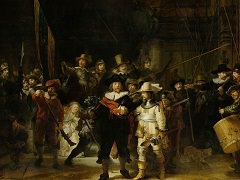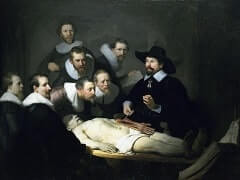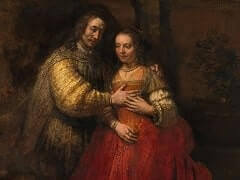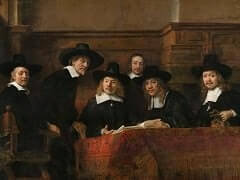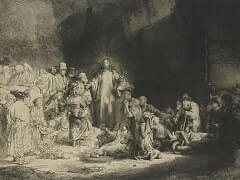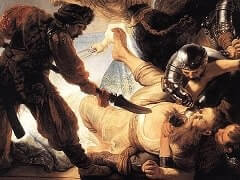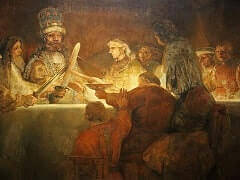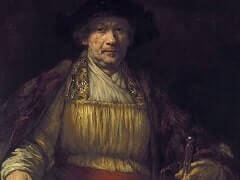The Stoning of Saint Stephen, by Rembrandt

St Stephen was the first Christian martyr and experienced a vision of the open heavens as he was being stoned to death. He had angered the authorities in Jerusalem with his zealous preaching and was accused of blasphemy. He wears the robes of a deacon, as he was also one of the first seven deacons appointed by the apostles.
The Stoning of Saint Stephen is the first work that has been attributed to Rembrandt with certainty, easily recognizable as the elegant, precious style of the Leiden School. The melodramatic gestures and the classical style of the faces, however, hark back to the period that Rembrandt spent in the workshop of Pieter Lastman. It is a medium-sized oil painting on panel based on the biblical narrative in Acts VII:54, and is dated and signed 'R f'; this stands for the Latin 'Rembrandt fecit', which means 'Rembrandt did this'. In its elegant and precious effects, interpreters have seen the influence of the earlier Leiden school of art. However, the rendering of the faces in a more classical style and the drama of the moment both reflect the works of Lastman and Elsheime. The painting is divided into two distinct zones with a diagonal creating an effect of chiaroscuro: on the left, a man on horseback is in the shadow, and on the right, Stephen and his persecutors are in the light. Saul of Tarsus can be seen seated in the background holding in his lap the coats of the stoners. Some inaccuracies in the drawing can be seen. The character behind Stephen seems to be a self-portrait done into a wider composition, as Spanish painter Diego Velázquez did in his Las Meninas.


